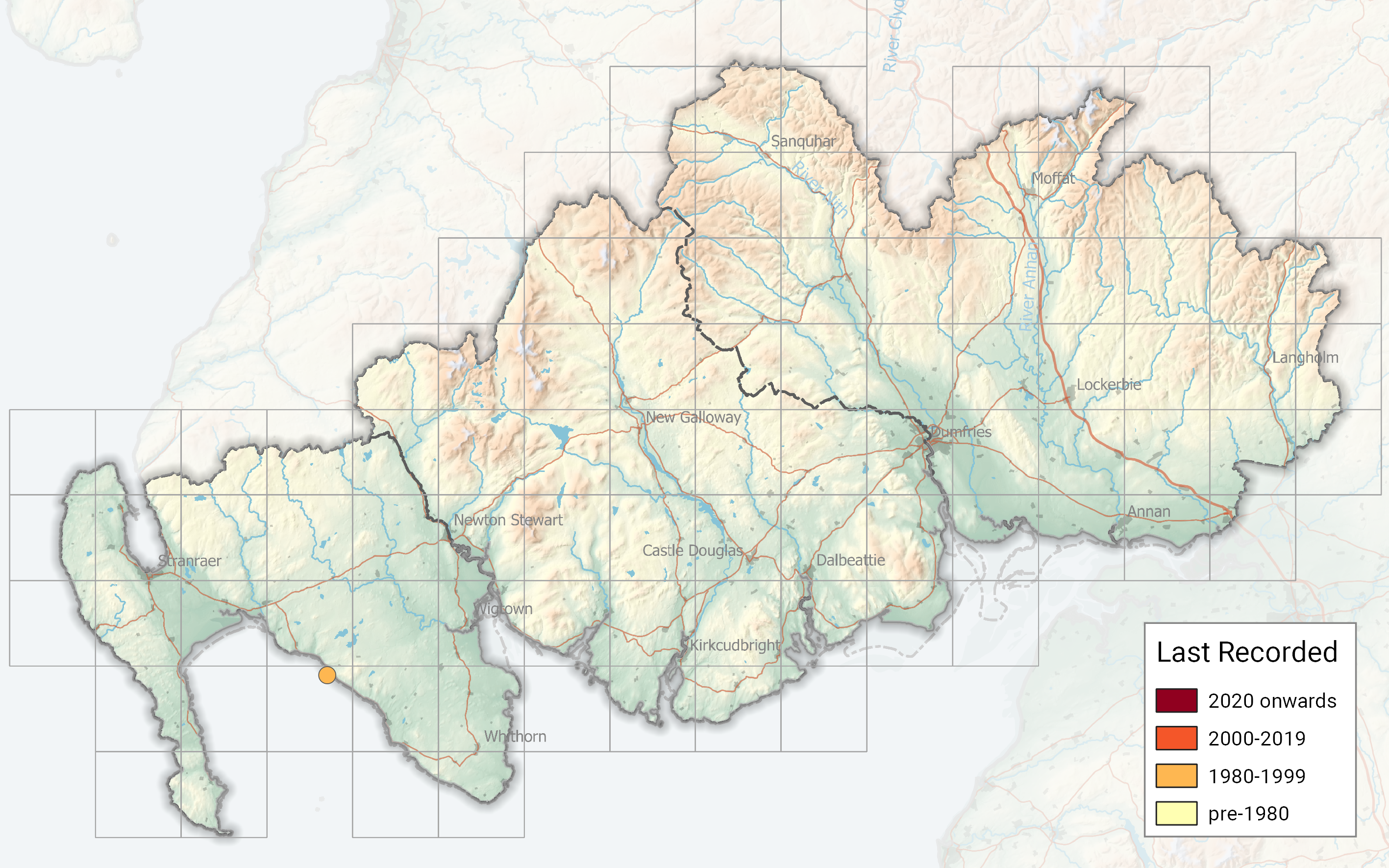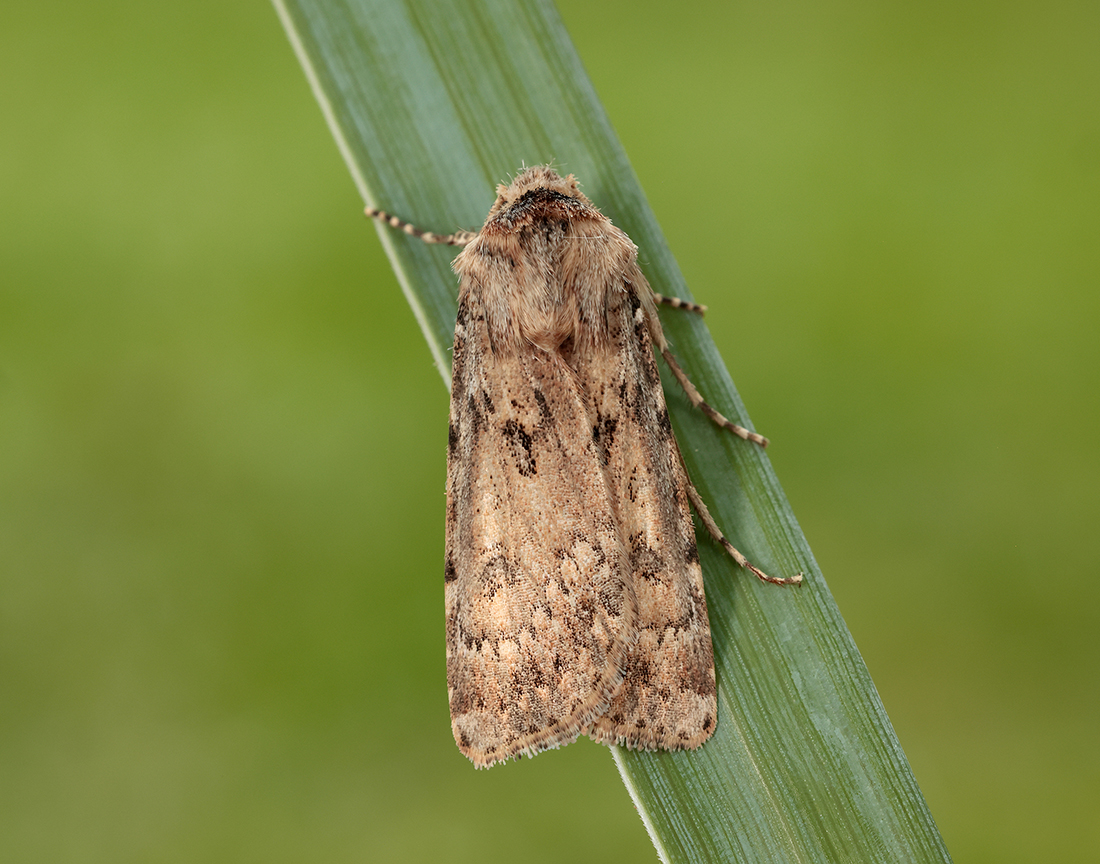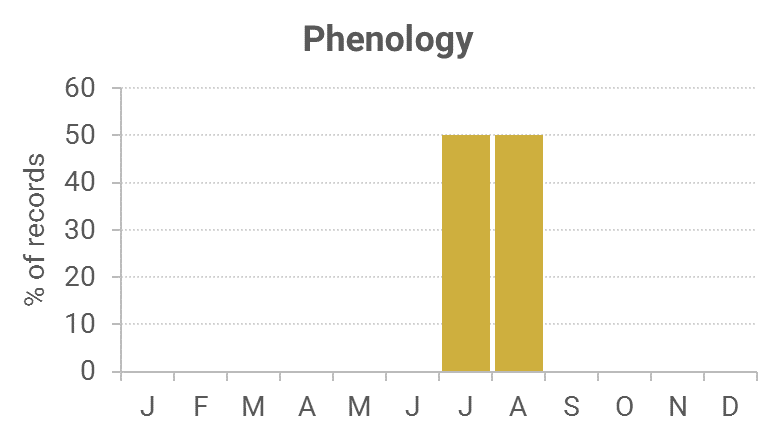Identification
The sandy coloured forewing with small, dainty markings will help identification.
Recording Method.
Attracted to light, also comes to sugar and flowers.
Life cycle
One generation. Overwinters as a larva, during August to May, becoming fully grown by October and spinning a cocoon deep in the sand. By the spring it forms a pupa.
Larval foodplants
A wide variety of strandline plants.
Habitat
Coastal sand-dunes.
History
J. Garraway informed Gordon (1913) that he had taken one at sugar at the end of the Drumblair Road, Luce Bay (VC74), on 15th July 1905.
Although this species did not appear in the Moths of Great Britain & Ireland, Bernard Skinner in mid-August 1987, had found the larvae to be not uncommon along the shoreline from Sandhead to Torrs Warren in sand under plants of Atriplex laciniata, thus confirming Garraway’s record.




